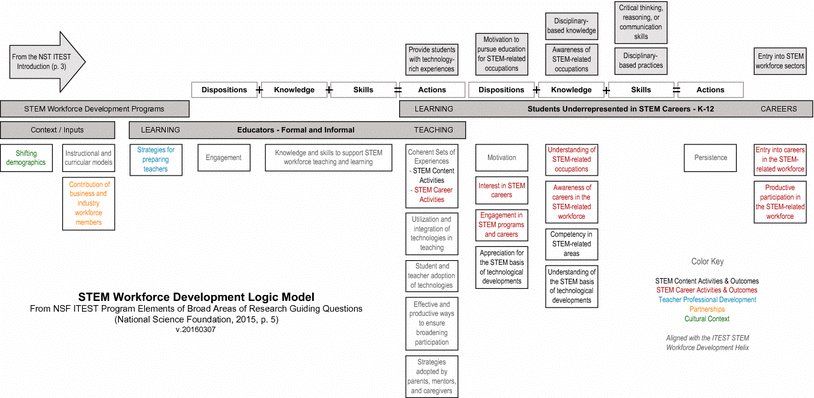Workforce Education Models for K-12 STEM Education Programs: Reflections on, and Implications for, the NSF ITEST Program
Publications
This article proposes a STEM workforce education logic model, tailored to the particular context of the National Science Foundation’s Innovative Technology Experiences for Students and Teachers (ITEST) program. This model aims to help program designers and researchers address challenges particular to designing, implementing, and studying education innovations in the ITEST program, considering ongoing needs and challenges in STEM workforce education in the USA. It is grounded in conceptual frameworks developed previously by teams of ITEST constituents, for their part intended to frame STEM